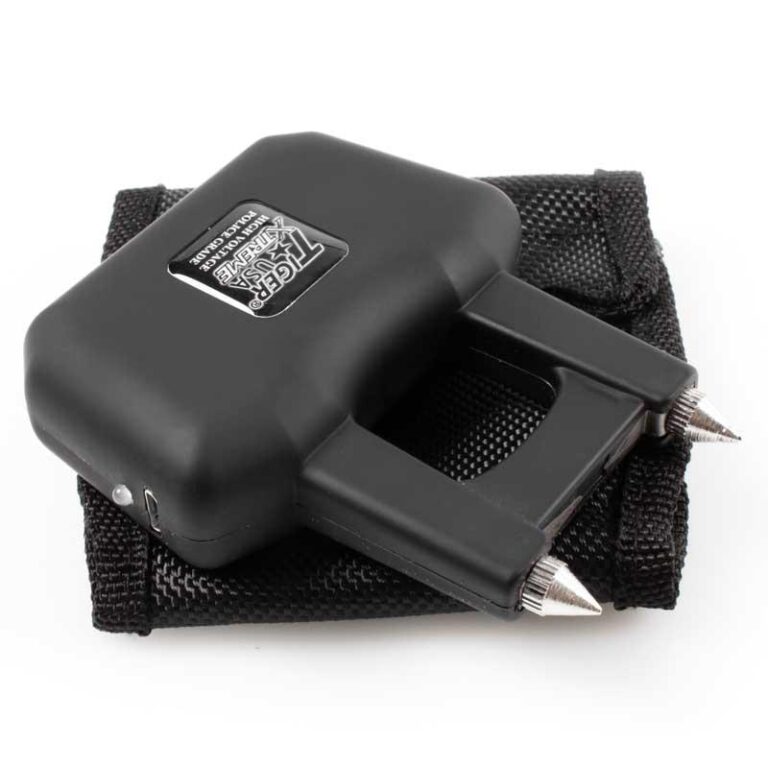Table of Contents
- Understanding the Risks of Using a Wet Stun Gun
- Immediate Actions to Take When Your Stun Gun Gets Wet
- Proper Drying Techniques to Prevent Damage and Malfunction
- Long-Term Maintenance and Safety Precautions for Wet Conditions
- Final Thoughts
Understanding the Risks of Using a Wet Stun Gun
Using a stun gun in wet conditions introduces significant hazards that users often overlook. Since these devices rely on electrical currents to incapacitate an attacker, moisture can cause unintended electrical pathways, leading to malfunctions or even electric shocks that could harm the user or bystanders. Water can also compromise the internal circuitry, causing shorts that may render the stun gun unreliable when you need it most. This risk is amplified if the skin is damp or if water pools around the device, increasing conductivity and unpredictable behavior.
It’s crucial to recognize key dangers when a stun gun gets wet, including:
- Reduced effectiveness due to disrupted electrical flow, which can prevent the stun gun from delivering the intended charge.
- Potential for injury from accidental shocks caused by water bridging contacts not meant to touch.
- Damage to internal components that may void warranties or lead to costly repairs.
Immediate Actions to Take When Your Stun Gun Gets Wet
First and foremost, disconnect the stun gun from any power source and switch it off if possible. Avoid touching the metal probes or terminals, as residual moisture could still carry an electric charge. Next, carefully remove the battery if your device design allows it, to prevent any electrical short circuits while drying the unit. Resist the urge to use hairdryers or direct heat sources, as excessive heat can damage the internal components or casing. Instead, gently pat the exterior with a dry, absorbent cloth to soak up surface moisture.
Once the excess water is removed, it’s crucial to let your stun gun dry out completely before attempting to use it again. Place it in a well-ventilated, warm (not hot) area or consider using silica gel packets or uncooked rice in an airtight container to expedite moisture absorption. During this drying period, avoid trying to power on the device or test it, as moisture inside can cause permanent damage or unsafe malfunctions. Keeping these steps in mind ensures both your safety and the longevity of your self-defense tool.
Proper Drying Techniques to Prevent Damage and Malfunction
Long-Term Maintenance and Safety Precautions for Wet Conditions
To ensure your stun gun remains reliable and safe after exposure to wet conditions, start with a thorough inspection and proper drying process. Always unplug or remove batteries immediately if your device gets wet. Avoid using heat sources like hair dryers, which can damage internal components; instead, place the stun gun in a dry, ventilated area at room temperature. Using silica gel packets or uncooked rice alongside the stun gun can help absorb residual moisture more effectively. Once dry, test the unit in a controlled environment to ensure it’s functioning correctly before regular use.
Long-term care involves:
- Storing your stun gun in waterproof or moisture-resistant cases to prevent future water damage.
- Regularly checking seals, insulation, and battery compartments for signs of wear or corrosion.
- Keeping the stun gun away from damp environments, especially when not in use.
- Consulting the manufacturer’s manual for specific moisture-related care instructions.
By following these safety precautions and maintenance tips, you not only extend your stun gun’s lifespan but also ensure it operates safely and effectively whenever needed.
Final Thoughts
In conclusion, dealing with a wet stun gun requires prompt and careful action to ensure both your safety and the device’s functionality. Always prioritize drying the stun gun completely and avoid attempting to use it until you are confident it is safe to do so. Regular maintenance, proper storage, and following the manufacturer’s guidelines can help prevent water damage in the first place. Remember, safety comes first-when in doubt, consult a professional or replace the device to avoid any risks. Stay prepared, stay safe, and keep your self-defense tools in optimal condition.Check Our Other Blogs
- StunGun – Your Trusted Source for Stun Guns, Laws, and Self-Defense Tips
- PepperSprayLaws – Your Trusted Resource for Pepper Spray Information
- StunGunLaws – Your Trusted Guide to Stun Gun Legality and Safety





